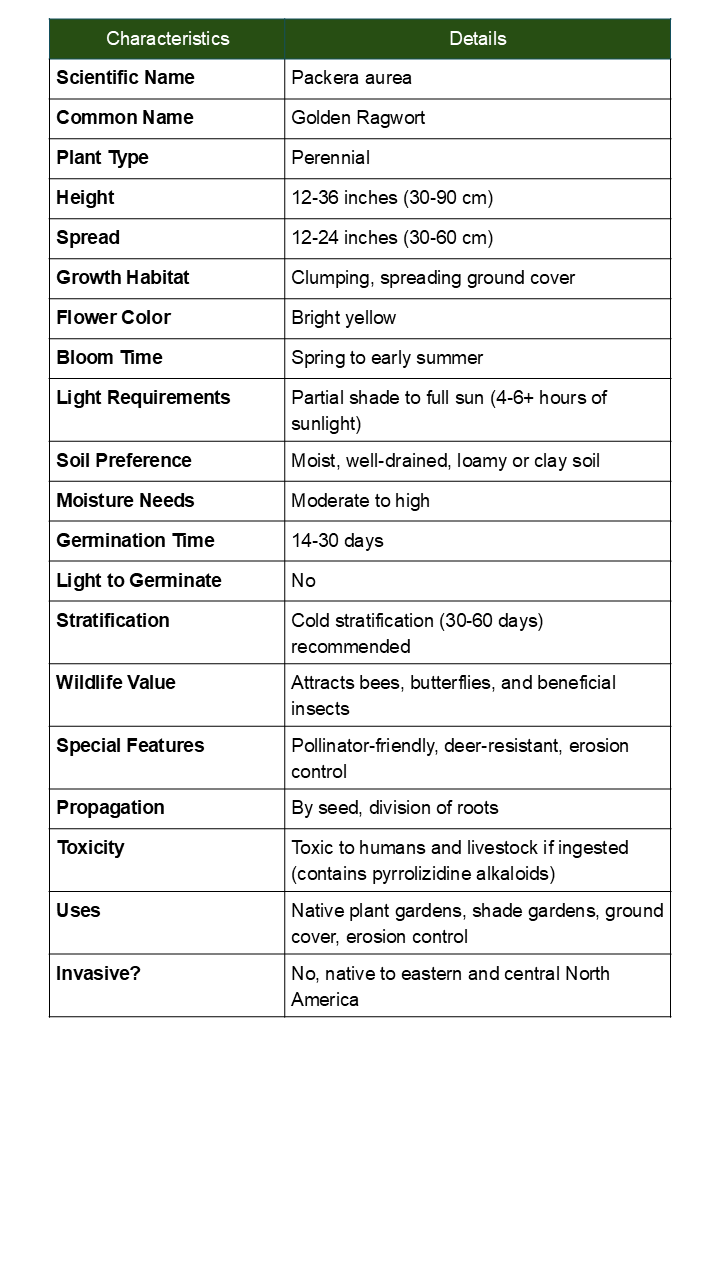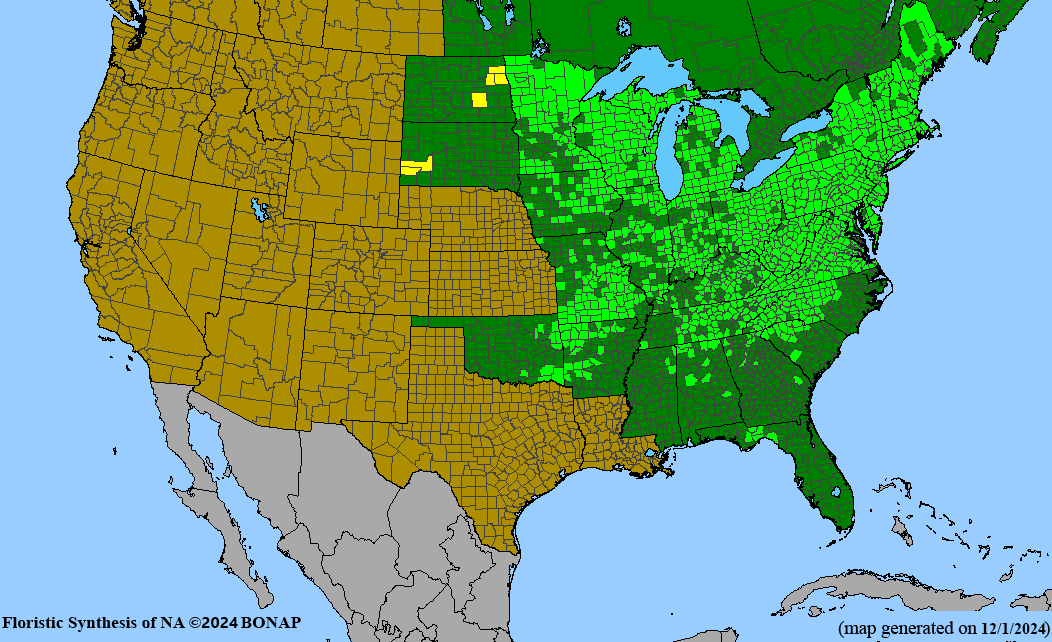Golden Ragwort Native Wildflower Seeds - Packera aurea
Regular price$4.00
/
Tax included.
1 review
Description
Illuminate Your Garden with Golden Ragwort
Discover the early spring beauty of Golden Ragwort (Packera aurea), one of the first native wildflowers to bloom each year. This stunning perennial creates carpets of bright golden-yellow daisy-like flowers that herald the arrival of spring.
Why Choose Golden Ragwort?
- Early Bloomer: First flowers appear in early spring, providing crucial early nectar for pollinators
- Shade Tolerant: Thrives in partial to full shade where many wildflowers struggle
- Ground Cover: Forms attractive colonies that suppress weeds naturally
- Native Excellence: Indigenous North American wildflower perfectly adapted to local conditions
- Wildlife Value: Essential early food source for native bees, butterflies, and beneficial insects
Growing Information
Height: 1-2 feet tall
Spread: 1-2 feet wide, spreads by rhizomes
Light: Partial shade to full shade
Soil: Moist, well-drained soil, tolerates various soil types
Zones: Hardy in USDA zones 3-9
Bloom Time: March to May
Ideal for woodland gardens, shade borders, rain gardens, and naturalized areas. Golden Ragwort is perfect for those challenging shady spots where you want reliable spring color and ecological value.



